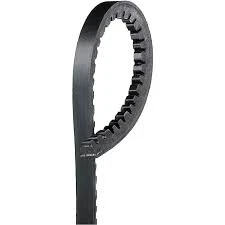- Arabic
- French
- Russian
- Spanish
- Portuguese
- Turkish
- Armenian
- English
- Albanian
- Amharic
- Azerbaijani
- Basque
- Belarusian
- Bengali
- Bosnian
- Bulgarian
- Catalan
- Cebuano
- Corsican
- Croatian
- Czech
- Danish
- Dutch
- Afrikaans
- Esperanto
- Estonian
- Finnish
- Frisian
- Galician
- Georgian
- German
- Greek
- Gujarati
- Haitian Creole
- hausa
- hawaiian
- Hebrew
- Hindi
- Miao
- Hungarian
- Icelandic
- igbo
- Indonesian
- irish
- Italian
- Japanese
- Javanese
- Kannada
- kazakh
- Khmer
- Rwandese
- Korean
- Kurdish
- Kyrgyz
- Lao
- Latin
- Latvian
- Lithuanian
- Luxembourgish
- Macedonian
- Malgashi
- Malay
- Malayalam
- Maltese
- Maori
- Marathi
- Mongolian
- Myanmar
- Nepali
- Norwegian
- Norwegian
- Occitan
- Pashto
- Persian
- Polish
- Punjabi
- Romanian
- Samoan
- Scottish Gaelic
- Serbian
- Sesotho
- Shona
- Sindhi
- Sinhala
- Slovak
- Slovenian
- Somali
- Sundanese
- Swahili
- Swedish
- Tagalog
- Tajik
- Tamil
- Tatar
- Telugu
- Thai
- Turkmen
- Ukrainian
- Urdu
- Uighur
- Uzbek
- Vietnamese
- Welsh
- Bantu
- Yiddish
- Yoruba
- Zulu
sept. . 03, 2024 21:54 Back to list
rubber timing belt
Understanding Rubber Timing Belts Importance and Maintenance
Rubber timing belts play an essential role in the operation of internal combustion engines, primarily in vehicles. These belts are designed to synchronize the crankshaft and camshaft, ensuring that the engine's valves open and close at the proper times during each cylinder's intake and exhaust strokes. The precise timing maintained by these belts is critical for optimal engine performance, efficiency, and longevity.
The timing belt, typically made from rubber reinforced with fibers such as nylon, is designed to withstand the intense conditions of the engine. It operates under various temperatures and provides a flexible, durable solution that effectively transmits power. Unlike chains, timing belts are quieter, lighter, and often more suited for smaller engines. Their composition allows for significant acceleration and deceleration without losing efficiency, a crucial aspect in today’s performance-driven automotive industry.
However, rubber timing belts are not immune to wear and tear
. Over time, exposure to heat, oil, and other harsh elements in the engine compartment can cause the rubber to degrade. Cracks, fraying, or a glazed surface on the belt could indicate a need for replacement. Failing to replace a worn timing belt can lead to severe engine damage, as a belt that fails while in operation can cause the pistons to collide with open valves, leading to costly repairs.rubber timing belt

To ensure the longevity and reliability of rubber timing belts, regular maintenance is necessary. Vehicle manufacturers often recommend specific intervals for timing belt replacement, typically ranging from 60,000 to 100,000 miles, depending on the make and model. Adhering to these guidelines not only protects the engine but also avoids the unexpected failure that could occur if the timing belt is neglected.
In addition to regular inspection and replacement, it's essential to consider the condition of other components of the timing belt system. The tensioner, pulley, and water pump (if driven by the timing belt) should also be checked for wear and functionality. Replacing these components at the same time as the timing belt can save time, effort, and costs in the long run, as they are often interconnected.
Moreover, keeping an eye on symptoms of potential timing belt issues—such as unusual noises from the engine, engine misfires, or a noticeable drop in performance—can help during early detection of problems. Owners should be proactive, not only about monitoring the condition of the timing belt but also about following the manufacturer's service recommendations.
In conclusion, rubber timing belts are vital for the smooth operation of an engine. Understanding their function and implementing regular maintenance can significantly enhance vehicle performance and reliability. By being attentive to the condition of timing belts and adhering to scheduled replacements, car owners can prevent unexpected breakdowns and ensure that their engine runs smoothly for many miles ahead.
-
Korean Auto Parts Timing Belt 24312-37500 For Hyundai/Kia
NewsMar.07,2025
-
7PK2300 90916-T2024 RIBBED BELT POLY V BELT PK BELT
NewsMar.07,2025
-
Chinese Auto Belt Factory 310-2M-22 For BMW/Mercedes-Benz
NewsMar.07,2025
-
Chinese Auto Belt Factory 310-2M-22 For BMW/Mercedes-Benz
NewsMar.07,2025
-
90916-02660 PK Belt 6PK1680 For Toyota
NewsMar.07,2025
-
drive belt serpentine belt
NewsMar.07,2025

